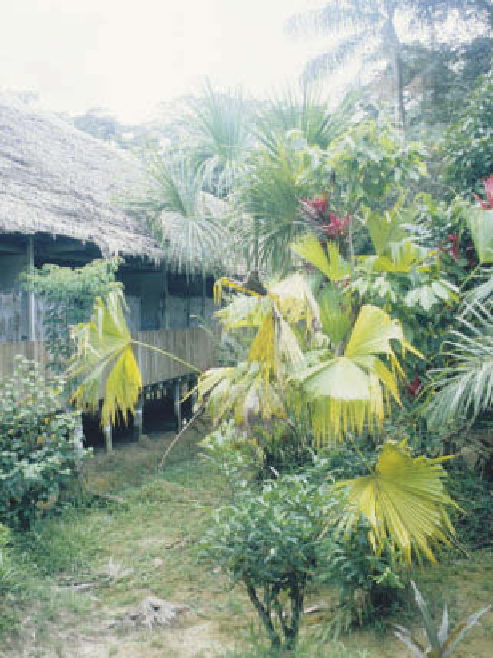Geoscience Reference
In-Depth Information
Annual income
Net present value
Use
(US$)
a
(US$)
b
Comments
Extractive uses
Latex harvest
22
440
Does not include other forest
products or tourism
Edible fruits harvest
400
6000
Total (harvesting)
422
6440
Sustainable selective logging
15
490
Total (harvesting + sustainable logging)
437
6930
Conventional 'development' uses
One-time removal of marketable timber
1000
Cutting destroys extractive resources
Reforestation with Gmelina arborea
159
3184
Not sustainable
Total (forestry)
4184
Intensive cattle ranching on ideal pasture
148
<2960
Not sustainable
Total (ranching)
<2960
Source: After Peters et al. (1989).
Notes:
a
After labour and transport.
b
Twenty-year discounted.
globe. Precipitation is generally high, with a dry season of
variable length. Most of the soils forming under rain
forest conditions are relatively poor, with nutrients rapidly
recycled and being stored in the biomass rather than in
the soil.
The natural vegetation of the area is a biologically rich
forest with characteristic layers of growth, from the upper
canopy of the tallest trees down to the dense vegetation
of the forest floor. These conditions provide a variety of
habitats for plants and animals. The number of species
found in the average rain forest is far greater than
anywhere else on Earth.
For a variety of reasons, these forests have suffered
major clearance, especially in west Africa, southern India
and parts of eastern Asia. The surviving areas, dominated
by Latin America and central Africa, are still experiencing
great pressures for land clearance, leading to dramatic
losses of biodiversity and habitat.
In theory it should be possible to maintain forest cover,
given sufficient investment in agriculture and forest
management and a well enforced network of protected
areas. Inevitably there will be some further losses of
forested areas due to social and economic difficulties,
international disputes and problems of education. What
needs to be stressed is that such a valuable global resource
must not be destroyed. A practical form of sustainable
management and control is needed.
Amazon for access. Local styles of construction are used to
imitate the natural environment and disturbance is kept to a
minimum, in theory.
Photo: Peter Smithson












































